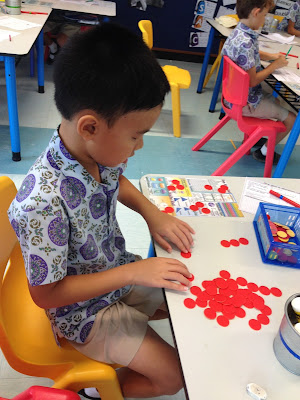Followed the ideas here and used the base 10 blocks.
http://corkboardconnections.blogspot.com/2013/09/placevalue.html
Had to get the children to rethink previous experiences with the manipulatives and think about the 100 block as one whole, rather than one hundred etc.
Using a place value chart on the carpet helped too as they were able to physically move blocks or number cards.
Lots of work on building decimals and relating them back to fractions and vice versa before we delved deeper.
One interesting moment was when we reviewed what happens when we multiply a number by 10. I gave the children a pre-assessment sheet and the results were quite surprising.
A lot of children had obviously learnt that when we multiply by 10, you add just need to add a zero. I think this is what I was taught at school too! It is really important for us to stop doing this and show the children that actually it is about each digit getting 10 times bigger and thus moving one place to the left. Reviewing that our number system is based on the base 10 system. A great video from maths antics explains this to the children in a clearer way.
Hoping to see better results when we come to do this as a post assessment...






































